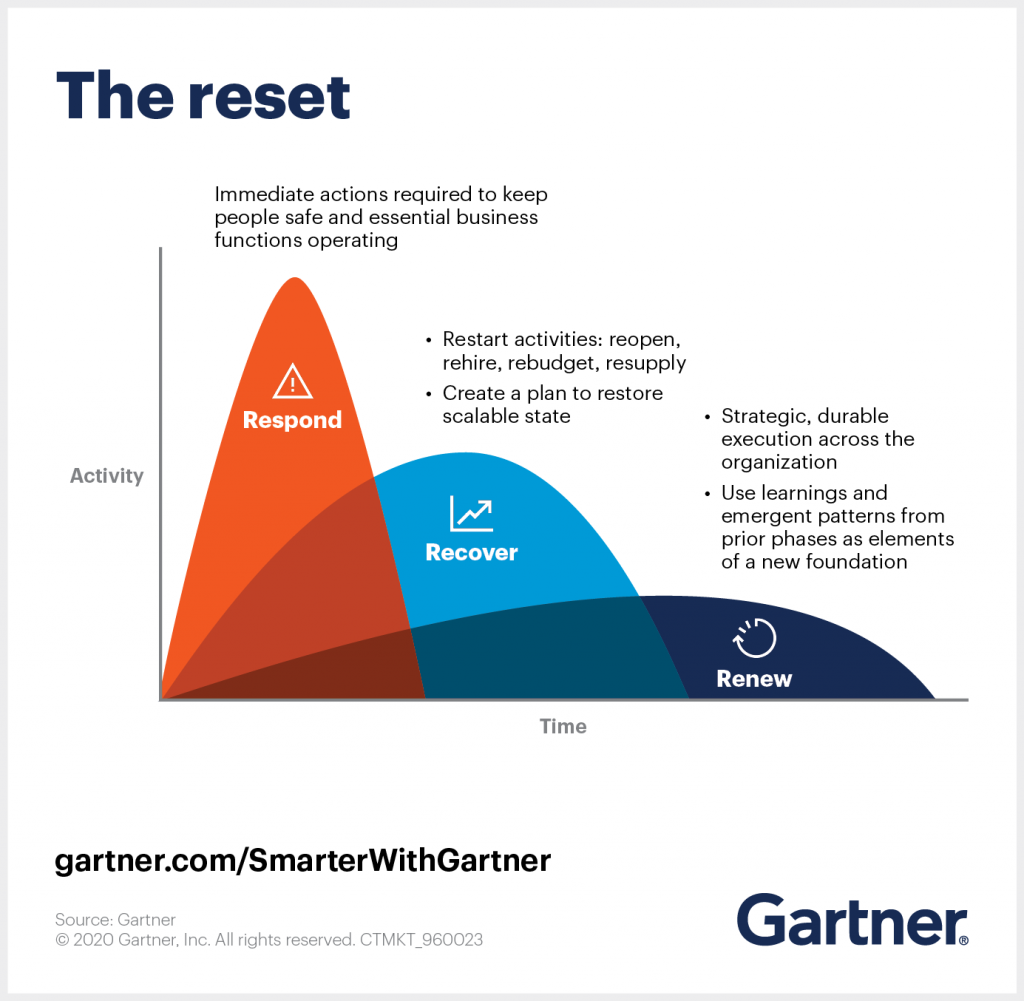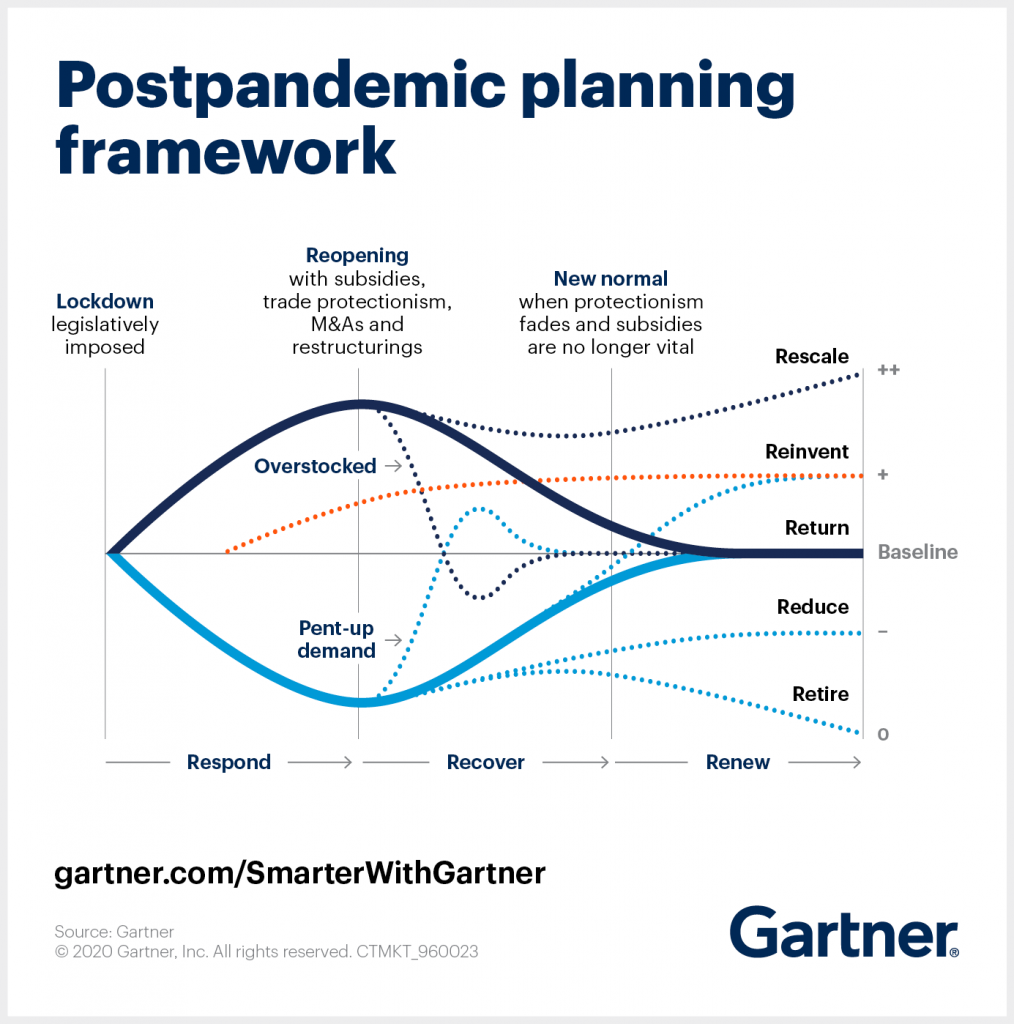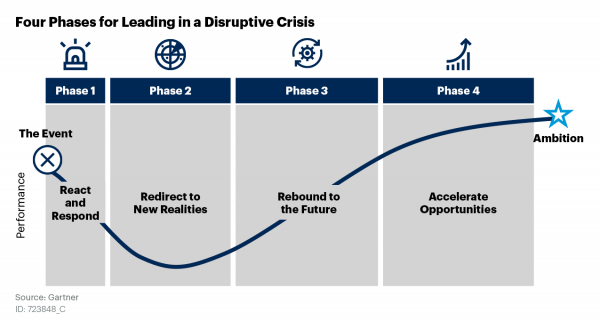According to the Business Agility Institute, business agility
It is the ability and willingness of an organization to adapt, create and take advantage of change for the benefit of its customers.”
This simple statement exposes the dramatic mindset shift necessary for agile organizations.
Where the way you respond to the market is more reliably predictable than the way the market responds to you. So far, we have developed the following 3 main themes:
- Enterprise scaling and its similarities to agile scaling.
- 10 minimum skills required to transform a business.
- Exponential Agility Model of a Company.
Today we will reaffirm how agile can help us overcome the current crisis and deliberately prepare to face any type of future crisis, such as through digital transformation or any other strategy depending on the priorities to be addressed.
10. Cultural and business transformation.
The internalization of the cultural and business transformation in a complete organization is a challenge especially when it is a large corporate with more than 100 years of existence, since, in a digital transformation strategy, it is necessary that we observe the advantages of its physical model and the opportunities of your digital model, the former will be intrinsic strengths that allow you to compete like no other, the latter will keep you at the forefront in this transformation.
Figure 1: Crisis care model.

Source: Gartner (2020).
It is very important that the organization or large corporate requires different versions of itself according to the turbulence of the environment that occurs, which, if it is a fact that organizations that are already working agile, have moved quickly in this curve recession accentuated by the pandemic, this has even allowed them to climb to higher levels, due to the advance of their digital transformation, like others that started, are obtaining a performance above the average and those that have not done agile and are tending to disappear, below average.
Figure 2: Post-pandemic framework for responding to a crisis.

Source: Gartner (2020).
I believe that some agile initiatives should evolve deliberately, such as intra-startups when they are successful, make a vertical scaling, which allows them to compete directly with the market and generate a different version of the business that incubates them in such a way that the latter prepare their new version, satisfying the market with new products and / or services. Some companies in the market do it as an innovation strategy that requires real investment, to generate and serve new markets, thus generating an exponential business, which, although it will not be a unicorn, will perform above the market average in the that you are, which will lead you to be the leader of it.
An agile organization is conceived as one in which its strategies represent the ability to create value and respond to constant change, constantly planning and adapting its initial plans through timely and continuous continuous learning, to focus on identifying what is meaningful, fundamental, thus satisfying customer needs as quickly as possible.
Figure 3: Possible Roadmap to navigate a crisis.

Source: Gartner (2020).
To create an agile organization from end to end, it will be necessary to take into account the size, the transformation process, the life span it has, the business domain. We achieve an agile business by executing agile with agile, thus our center is in the transformation of the transformation processes and value delivery, while at the same time we create a work system based on a way of thinking and doing different from the agile business.
Thus, the leader of the organization should assume an explicit role, not only as a strategist, but as a designer and administrator of the complex reality of the environment, allowing the creation of sustainable, self-organizing, learning, agile and exponential organizations.
Organizational redesign implies the internalization of new values and of a unique new generation operating model prepared for turbulent environments, which crosses the entire organization, an operating model of an exponential and disruptive organization in the market, like the following one, which will be our topic of conversation in a following article.
Today we will move on to here, if you have any questions or comments about it, feel free to contact us directly and ask us.
Many greetings.
Miguel A. G. Martínez H., September 2020.
Bibliography:
- AG, D. (2020, March 10). Respond and Recover | Crisis management in unprecedented times. Retrieved August 20, 2020, from https://www2.deloitte.com/us/en.html
- Allas, T., Sjatil, P. E., Stern, S., & Windhage, E. (2020, April). How European businesses can position themselves for recovery. Retrieved September 10, 2020, from https://www.mckinsey.com/
- C, B., 2020. Domains Of Business Agility – Business Agility Institute. [online] Business Agility Institute. Available at: <https://businessagility.institute/learn/domains-of-business-agility/> [Accessed 28 September 2020].
- Dreyfus model of skill acquisition. (2020, June 18). Retrieved September 18, 2020, from https://en.wikipedia.org/wiki/Dreyfus_model_of_skill_acquisition
- Howard, C., 2020. Reset Your Business Strategy In COVID-19 Recovery. [online] Gartner.com. Available at: <https://www.gartner.com/smarterwithgartner/reset-your-business-strategy-in-covid-19-recovery/> [Accessed 28 September 2020].
- Mahadevan, D. (2018, February 20). ING’s agile transformation. Retrieved September 19, 2020, from https://www.mckinsey.com/industries/financial-services/our-insights/ings-agile-transformation
- Mitchell, C. (n.d.). The Conference Board – TCB C Suite Challenge 2020 Covid19 Recovery. Retrieved September 10, 2020, from https://conference-board.org/us/
- LEANTALK, 2020. The Ultimate Lean Talk Forum And Blog- About Us. [online] Leantalk.org. Available at: <https://leantalk.org/about-leantalk-org> [Accessed 14 September 2020].
- One, V. (n.d.). 14th Annual State of Agile Report. Retrieved September 10, 2020, from https://stateofagile.com/
- O’rreally, B. (2020, May 11). Scaling Innovation Means Descaling Work. Retrieved September 10, 2020, from https://barryoreilly.com/resources/
- Saenz, H., Supko, M., & O’Keefe, D. (n.d.). Why Return to “Normal” When You Can Recover to a Winning Position? Retrieved September 10, 2020, from https://www.bain.com/




